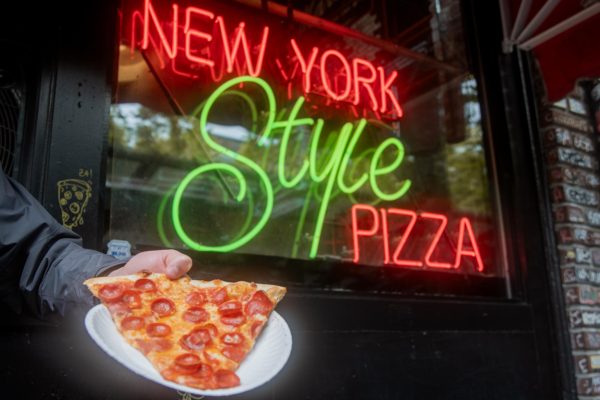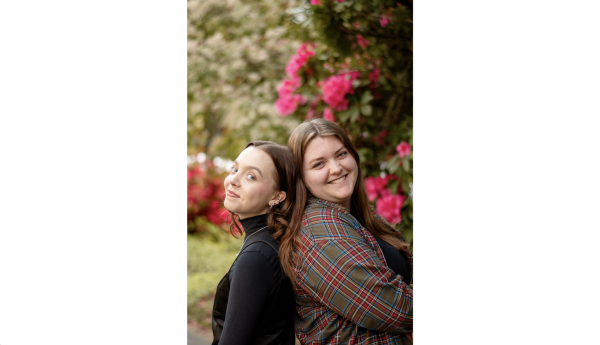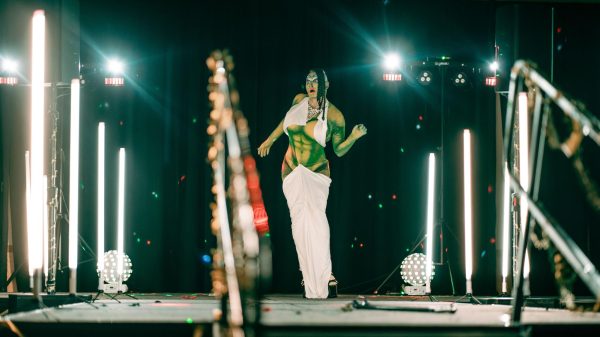Social Distancing is the Ultimate Turn On: Dating in Coronavirus
Online dating platforms like Tinder, Bumble, Grindr, Hinge and Match.com thrive off of people’s yearning to physically and emotionally connect. But what happens when you can’t meet physically anymore? Many dating sites and apps have been adapting to COVID-19 stay-at-home orders by offering free premium services or allowing users to indicate on their profiles that they’re opening to scheduling virtual Zoom dates.
Though most are staying inside to avoid the worst possible outcomes of this pandemic, people are still finding time to romantically connect online.
Emma Nelson, a junior Seattle University communication and media major, has recently revisited Tinder in hopes of experiencing a healthier and more positive environment.
“I’ve been off Tinder for a while before the pandemic, and then I got kind of bored and I was like, ‘Sure, I guess I’ll try it for now,’” Nelson said. “I’ve been having quite a bit of luck just having nice conversations with people because I think when you remove hookup culture from the equation, people are more willing to explore getting to know someone.”
The main difference between online dating pre-COVID-19 and now is the amount of deep, rich conversation to be had. Before, the easy way to spark a conversation would be to just go for it and send something sexually suggestive immediately.
“I do think that people are feeling a little bit more fragile, vulnerable and looking for support in a way they maybe weren’t before. So instead of just sending odd suggestive messages to people, they’re asking, ‘How are you doing?’ and checking in on people in really pleasant ways,” Nelson said.
With many following their respective states’ stay-at-home orders, there’s always the few who are opting to disregard the guidelines from disease experts.
“I’ve had a couple of people ask me if I was interested in meeting up, but that’s such a turn off right now. It’s so insensitive—not to mention I’m incredibly uninterested in meeting up with strangers,” Nelson said. “When that’s happened, people have been like, ‘Come over, you’re not doing anything since it’s a pandemic.’ Yeah, um, keyword: pandemic.”
With the current situation at handy, the upcoming summer and fall months will be filled with uncertainty about when we’ll be “back to normal,” in whatever capacity that means.
“I’ve been having nice, pleasant conversations, but to be honest, I’m not sure when I’m going to pursue these connections or if I’ll be able to pursue them soon. Although, I feel good with the people I’ve been interacting with,” Nelson said.
Newly kindled relationships that started to blossom at the beginning of the pandemic have also been given a chance to flourish online. To respect the privacy of this person’s relationship, they have decided to remain anonymous.
“Our relationship was fairly new when I left Seattle because he still lives in Seattle, and certainly it’s still generally new now. Although, it got to the point where things started to get very comfortable and from there we started to be like, ‘Oh yeah, we’re dating,’” the student said.
Dating digitally seems to have a lot of positives. Yet, when we’re all interacting primarily through screens or with family members, we momentarily forget what it is so fundamental about building a relationship and interacting face-to-face.
“I mean…We definitely have gone for the FaceTime sex route, and it’s worked pretty well, actually. I think it’s what’s working for us just to be on the screen, talking to each other and getting in the mood. That’s all I’ve got, that’s the only thing we can do,” the student said. “I think for him—my partner—to be dating long distance has made us more emboldened to try new things. It’s less awkward in a way; we can try different things without judgment, if one of us or both of us aren’t into it, we can both agree to move on.”
I was hoping to add some of my own personal experience in this dating discussion, but sadly I fell into the same traps and pitfalls as my previous online dating attempts. If you don’t already know I, London Jones, am a bisexual woman of color—yes there’s a Lily Singh pun in there for anyone who noticed.
Research shows that Black women and Asian men are both less likely to find matches than any other member, both ranked the least attractive in their respective gender categories. In contrast, White men and Asian women receive the highest percentage of matches. This isn’t to say I’m blaming my whole experience on a 2014 OKCupid study, but it’s important to address attitudes and opinions that ultimately alter people’s perceptions of online dating.
Every time I’ve tried to reenter the dating pool via Tinder, I’m mostly met with unnecessarily crude messages—a handful that refer to me as “chocolate” or references my skin tone—or people just wanting to immediately get into my pants and bring zero substance to the conversation.
This time around, it was more of a total lack of reception, even when utilizing the app’s international feature. I was getting matches, but no one would message me first or reply to my messages.
The debate between preference and racial bias is a hotly contested one, but it also begs a more important question: can we foster deep romantic connections without race as a factor, or is that impossible within our current cultural zeitgeist?









